10 Fast Growing Fruit Trees for Your Garden (With Pictures)
-
Pete Ortiz
- Last updated:

As a gardener, there is probably nothing more rewarding than picking your first fruit from your fruit tree. Growing fruit trees can seem intimidating for some, and the wait for its harvest may discourage you from doing the work. The good news is that there are fruit tree varieties that are fast growing and will have you enjoying their fruit quicker than you may believe.
In this article, we discuss fast-growing trees that you can add to your garden and reap the rewards within 3–4 years. With a little bit of knowledge, a little patience, and a lot of love, you can easily grow fruit trees and enjoy their abundant yield sooner than expected.
The 10 Fastest Growing Fruit Trees for Your Garden
1. Peach Tree
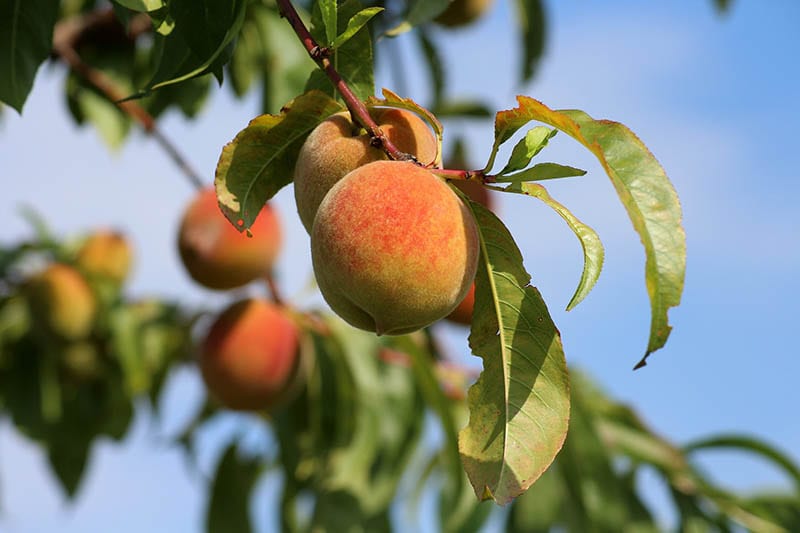
| USDA Hardiness Region | 4–9 |
| Sun | Full Sun, especially in the morning |
| Soil | Acidic, well-draining, fertile |
Peach trees are a popular choice for the orchard or garden and are fast-growing. If you provide your peach tree with optimal growing conditions, you will enjoy juicy peaches within the first two years. Not only are the fruits delicious, but their delicate pink flowers that bloom in early spring are beautiful.
Peach trees thrive in full sun, at least 6 hours per day, with good air circulation. If you plant your tree directly into the ground, provide some mulch to keep the soil moist. Find a second peach tree that is different but blooms at the same time to cross-pollinate with one another.
Peach trees don’t handle frost or cold temperatures too well, so cold months would require some protection, such as frost cloth. They also don’t tolerate soggy roots, so you must choose an area with well-draining soil. A peach tree takes 3 years to fruit, but poor care will result in a more extended period before harvesting.
If you want to enjoy the harvest as soon as possible, buy a grafted seedling and plant it rather than a seed. It’s also best to plant your peach tree between early spring and late winter when it’s dormant.
- Grow and fruit fast
- Beautiful spring blossoms
- Delicious fruit
- Not suitable for frost or cold.
2. Apple Tree

| USDA Hardiness Region | 3–8 |
| Sun | Full North facing sun |
| Soil | Well-draining soil, clay soil not suitable |
Apple trees are easy to grow, adapt to most temperate zones, and produce the most abundant harvest. It is native to New York and has medium-sized golden apples that are ready to harvest as early as July in some areas. Apple trees need to be cross-pollinated with another apple tree. Otherwise, you’ll end up with a beautiful tree that doesn’t produce fruit.
After planting, expect to wait for 3 to 5 years for your first full harvest, though sporadic fruit may appear sooner. Apples are among the best fruit trees to grow in pots, as long as you select dwarf varieties that won’t grow too large for the containers.
You won’t be able to grow apple trees if you don’t have cold weather because they require chill hours. Chill hours cause the plant to emerge from dormancy and flower. Keep in mind that the fruits will usually attract a variety of mammals and birds, and Their pollen and nectar provide essential nutrition for bees from early to late spring. Rodents can also cause damage to the stem or trunk of the tree.
- Easy to grow
- Abundant harvest
- Can grow in pots
- Needs chill hours
- Rodents can damage the trunk
3. Mulberry Tree

| USDA Hardiness Region | 5–9, some varieties 3–4 |
| Sun | Full sunlight |
| Soil | Fertile soil that drains well |
Mulberry trees grow quickly, typically 2.5 feet per year, and are best planted in the early spring. A grafted mulberry tree can start producing fruit in as little as 12 years and continue to do so for many years. The trees prefer full sun and rich soil, but they can tolerate partial shade, and once established, you will be picking dozens of cups of berries.
Mulberry trees are also easy to transplant, making them excellent indoor fruit trees that can be planted outside later. Mulberry trees’ roots can grow quickly and abundantly, and they should be planted away from important structures like your driveway or patio. You also don’t want to damage important parts of your property, so don’t plant them near sewage lines, septic tanks, or utility lines.
- Abundant in fruit once established
- Easy to transplant
- Great for providing shade
- They grow tall and have extensive root systems
4. Lemon Trees
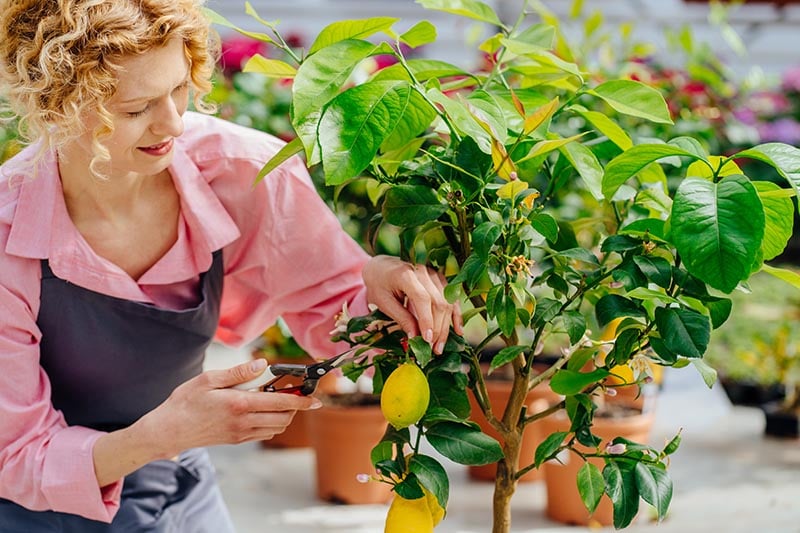
| USDA Hardiness Region | 8–10 |
| Sun | Full sunlight |
| Soil | Rich in humus, well-draining soil |
Although lemons aren’t the most popular fruit to pick straight from a tree and enjoy, they are still an essential fruit tree to have in your garden due to their many uses. An average lemon tree can reach up to 20 feet high and is a fast-producing tree.
One of the benefits of growing a lemon tree is that it self-pollinates, so you don’t need to grow more than one tree. Lemon trees begin producing fruits the year after they are planted, with a full harvest arriving 3 years later.
Meyer lemon trees are ideal for containers because they are small, so when they go dormant in the winter, you can bring them inside. Lemon trees do not tolerate frost and must be pruned regularly to ensure that the fruit is accessible.
- Grows quickly
- Self-pollinating
- Some varieties are ideal for containers
- Don’t tolerate frost
5. Apricot Tree
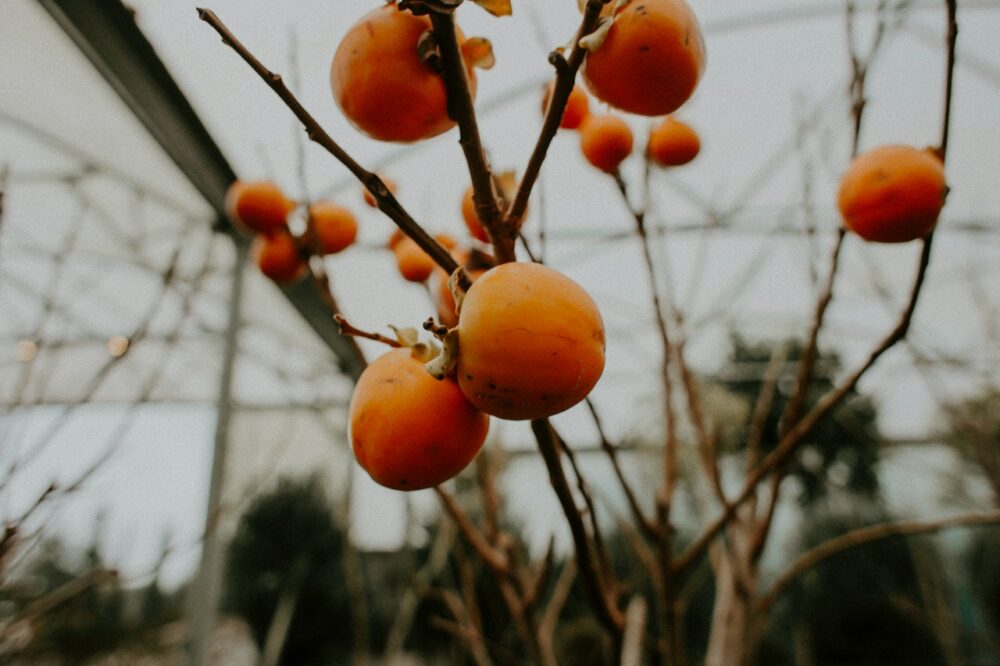
| USDA Hardiness Region | 5–8 |
| Sun | Full sunlight |
| Soil | Humus-rich, well-draining soil |
Apricot trees are beautiful ornamental fruit trees that are easy to grow because they self-fruit, and only one tree is needed. However, not all apricot trees are fast growers, but varieties such as the “Early Golden” and “Moorpark” are two fast-growing types.
Fruit will take 3 to 4 years to mature on average and will not bear fruit the first year they are planted. They prefer full sun but thrive in cooler temperatures, requiring 700 to 1,000 chilling hours to set fruit!
Most North American climates do not support fruiting on Apricot trees unless you live in a place where temperatures are consistent throughout the year. There are dwarf varieties that can be grown in containers. Buy a one-year-old tree with a well-developed root system for the best planting results.
- Self-fruiting
- Some varieties are fast-growing
- Ornamental tree
- Needs consistent temperatures
- Won’t bear fruit in the first year
6. Mandarin Fruit Tree
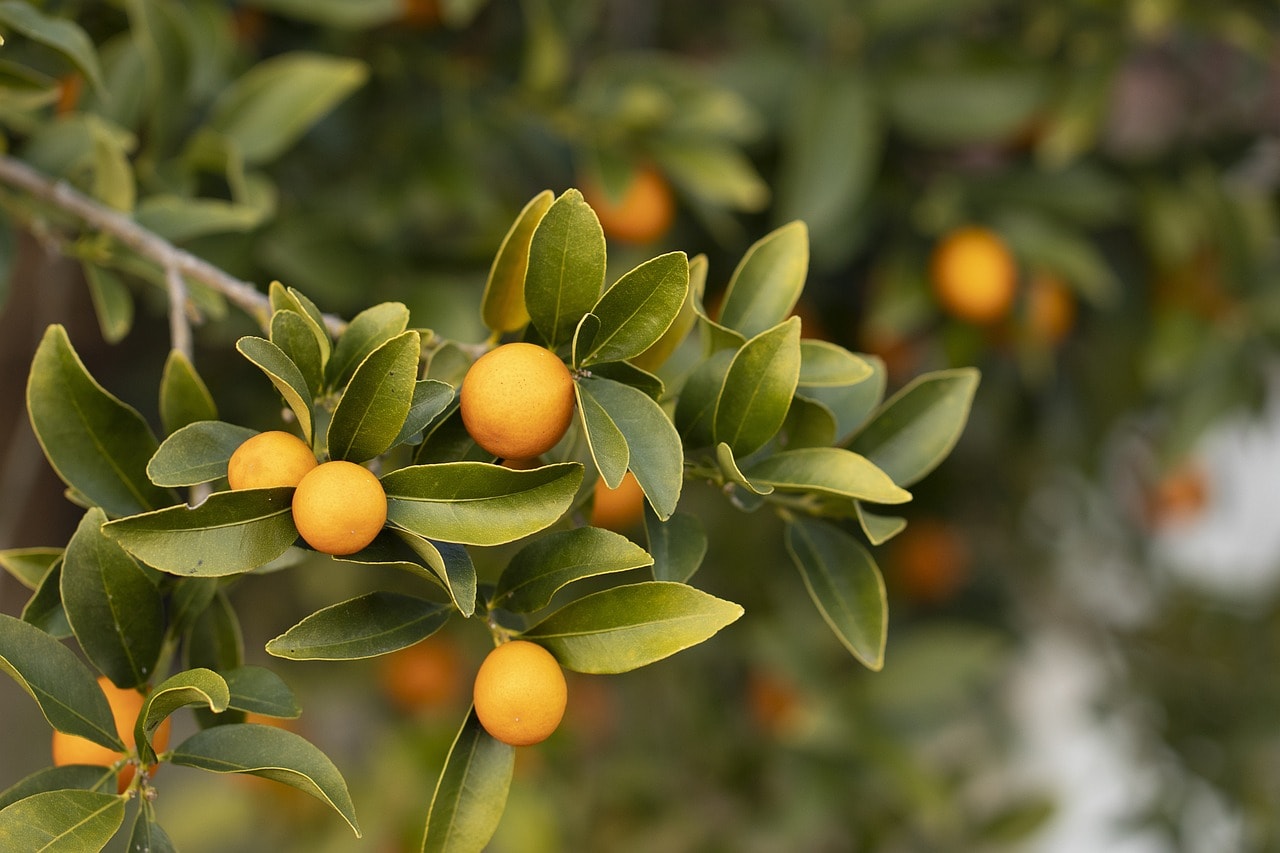
| USDA Hardiness Region | 8–10 |
| Sun | 5–6 hours of sunlight |
| Soil | Moderately acidic |
Mandarin trees are not only one of the most popular snacking fruits, but they grow a lot easier than other citrus trees, making them a great first citrus tree, especially if you are nervous about growing citrus trees. They are not only simple to grow, but they also do not require any pruning. Mandarins bloom in the spring, bear fruit in the summer, and ripen in the late autumn and early winter. They are not deciduous, but their growth slows or stops during the winter.
Mandarin trees are the most cold-tolerant citrus trees; however, their fruit is thinner-skinned and smaller in size, making it more susceptible to cold damage than larger citrus fruits.
While it is possible to grow a mandarin tree from seed, the harvest will take approximately 7 years. It is preferable to begin with grafted trees, which will yield a harvest in 2–3 years.
- Easy to grow
- Don’t require pruning
- Popular snacking fruit
- Cold can damage the fruit
7. Cherry Tree
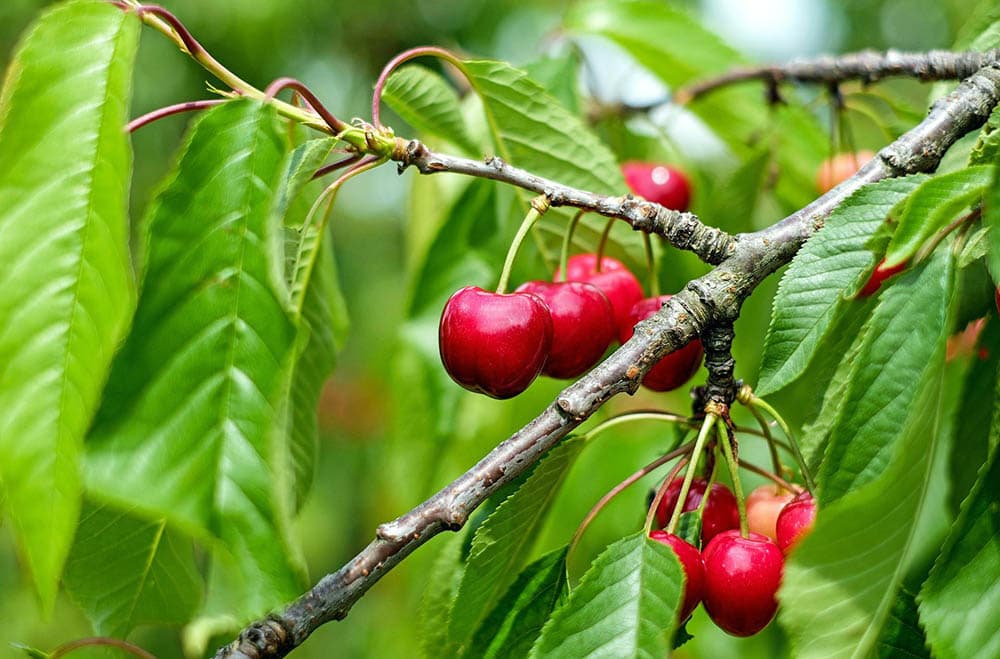
| USDA Hardiness Region | 4–7 |
| Sun | Full sun |
| Soil | Acidic to neutral soil that is well-draining |
Sweet cherry trees are outstanding ornamentals for the garden, and their fruits are deliciously sweet and decadent. Furthermore, its timber is in high demand. The trees can typically grow up to 20 inches per year and can take up to 4 years to produce a harvest, but sour cherries bear fruit earlier than sweet cherries and take 3 years to mature.
Cherry trees can get big, so to ensure good air circulation and plenty of sun, sweet cherry trees should be planted at least 40 feet apart and away from structures or other trees. Dwarf trees, on the other hand, require only about 10 feet of space between them and can be grown in pots anytime.
Sweet cherry trees are self-sterile, so they must be planted alongside other types of cherries to pollinate each other. It can take at least 7 years for them to bear fruit when grown from seed, so get one that is already a seedling to get faster results.
- Ornamental tree
- Some can be grown in containers
- Not ideal for small gardens
8. Guava Tree
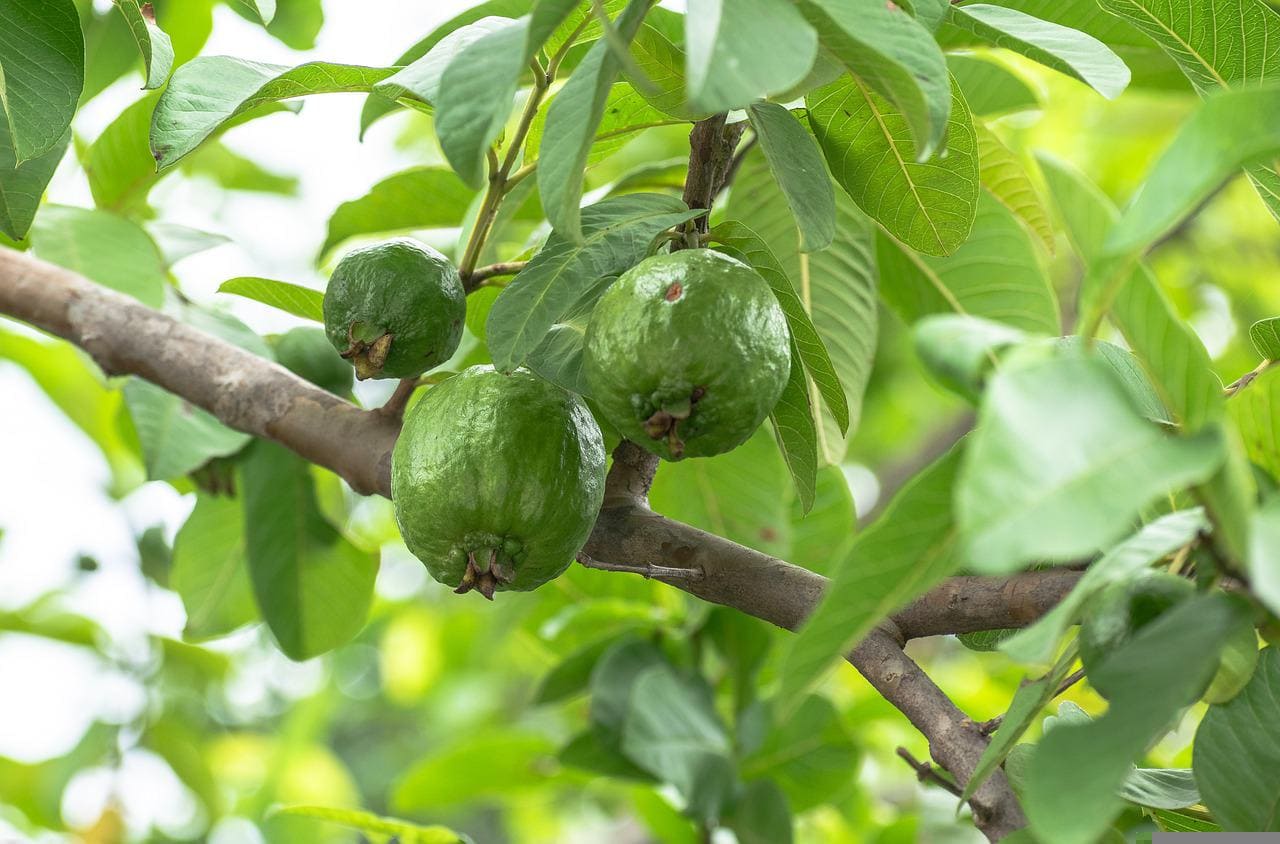
| USDA Hardiness Region | 9–12 |
| Sun | Full sun |
| Soil | Good drainage |
Guava is an exotic sweet fruit that grows on shrubs and can be grown in pots. Guava trees can grow up to 20 feet in a large backyard, but they are much smaller as indoor potted plants. Guava plants thrive in soil with good drainage and full sun to produce the most flowers and fruits.
They prefer slightly warm, humid weather and don’t tolerate frosty climates or desert-like heat. Even in sunny, warm climates with occasional icy temperatures, they require protection from freezing winds. Potted guava plants can thrive outdoors on a warm patio in the summer and then be moved indoors for the cold winter.
If you collect them from a store-bought fruit, they can be grown from seed, but if you want to see fruit quickly, an established seedling is a better option.
- Can be grown in pots
- Thrive in most soil
- Can be grown from seed
- Not suitable for frosty climates
9. Fig Tree
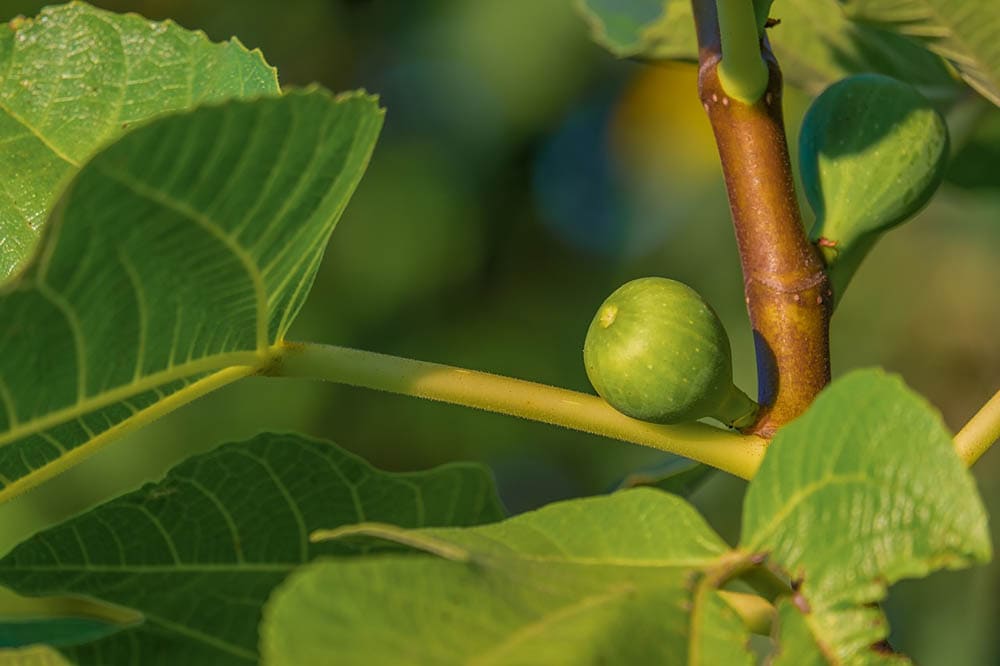
| USDA Hardiness Region | 8–11 |
| Sun | Full sun |
| Soil | Slightly acidic and well-draining |
Compared to other fruit trees, fig trees produce fruit quickly and are simple to grow. They prefer warm weather and often regenerate if they freeze to the ground, and growing them in a container allows you to bring them inside as the temperatures drop. They are also the simplest fruit to grow in containers because they adapt well to limited space. Figs need full sun to thrive, and when it doesn’t receive adequate sunlight, it produces fewer fig fruits.
- Bears fruit quickly
- Simple to grow
- Fruit can regenerate if frozen
- Will produce less fruit if not given full sun
10. Pear Tree
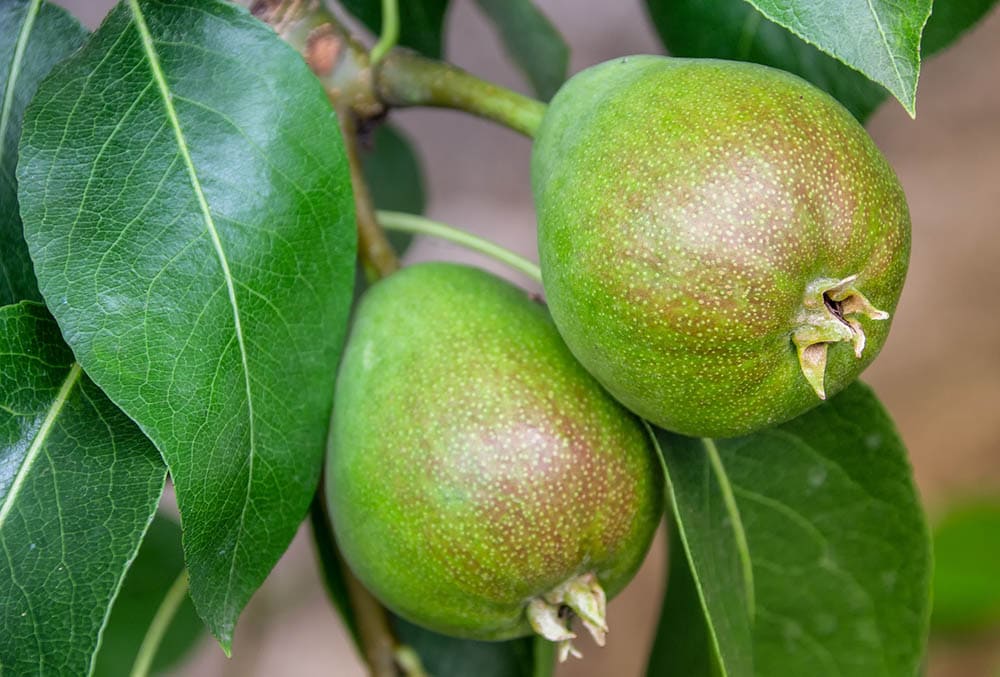
| USDA Hardiness Region | 3–10 |
| Sun | Full sun |
| Soil | Loamy soil |
There is a wide range of varieties of pear, but most of them reach up to 20 inches tall. Young pear varieties typically take 3 to 4 years to flower and bear fruit, while some types can take up to 10 years.
Asian pear trees are a good choice for a garden since they produce fruit early. Their fruit is a tasty combination of apples and pears, sometimes called papples.
They can easily grow because they don’t have too many diseases or pest problems.
If you decide to grow pears in your garden, you will need more than one for pollination.
- Delicious fruit
- Fewer disease and pest problems
- The right variety can grow quickly
- They grow big, so may not be suitable for small gardens
Tips for Growing Fruit Trees in Your Garden
Don’t let the thought of growing fruit trees intimidate you. If you follow these simple tips, you will see that it’s not so hard, and you can easily create an orchard of your own.
- Always pick a tree that is suitable for your climate to avoid problems in the future.
- Some fruit trees require a second one for cross-pollination, so if you have limited space and want one fruit tree, you will need to choose one that can self-pollinate.
- If you are growing any trees in containers, ensure they are the right size and have drainage holes. You can add gravel or rocks at the bottom to avoid soggy roots.
- When you plant your fruit tree, the hole size must be big enough. This will be different for different trees. If your tree is grafted, the joint should also be 2 inches above the soil line.
- Correct watering is very important. Generally, a fruit tree will need to be watered once or twice a week, and some extra water can help on hot days.
- Feed your tree with compost, and don’t forget to mulch around it to retain moisture. Don’t mulch too close to the stem since it can end up rotting.
Conclusion
Fruit trees can be a rewarding addition to your garden, and it doesn’t need to be an intimidating process. Choosing fruit trees that suit your climate and caring for them well will have you picking fruit for years to come. If you pick fast-growing fruit trees, you will reap the rewards sooner than you think. If you have a small yard, you can choose dwarf varieties or fruit trees, like Figs, that thrive in containers. Not only will you enjoy the fruits of your labor, but your garden will also look like paradise.
You Might Also Be Interested In:
Featured Image Credit: Couleur, Pixabay
Contents


